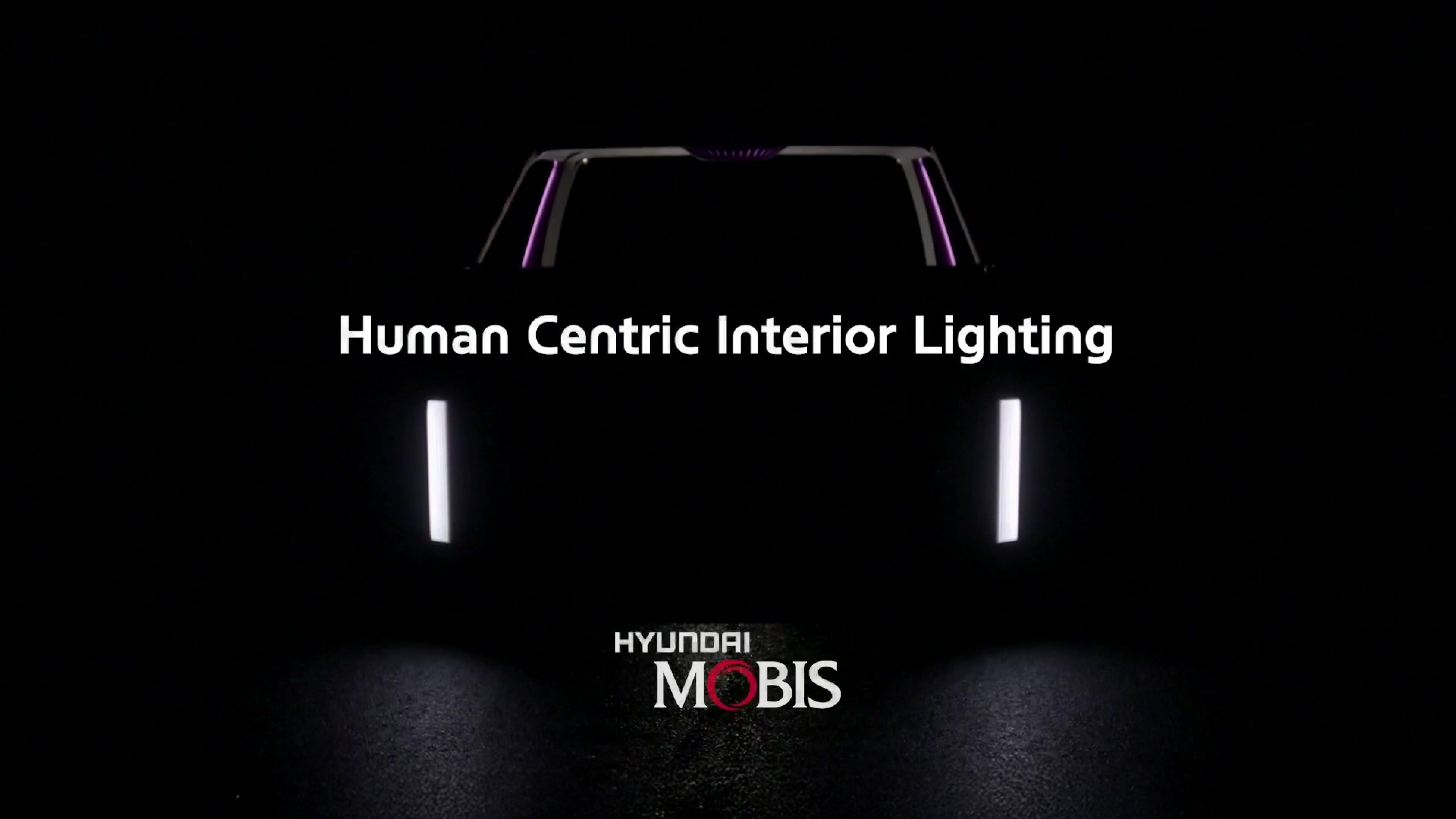



Human-Centric Lighting Technology
Future mobility is set to evolve into a more personalized space. As advancements in autonomous driving technology free users from the task of driving, mobility will increasingly serve as a living space. Achieving this transformation requires an enriched user experience (UX), which is why Hyundai Mobis developed its Human-Centric Lighting Technology.
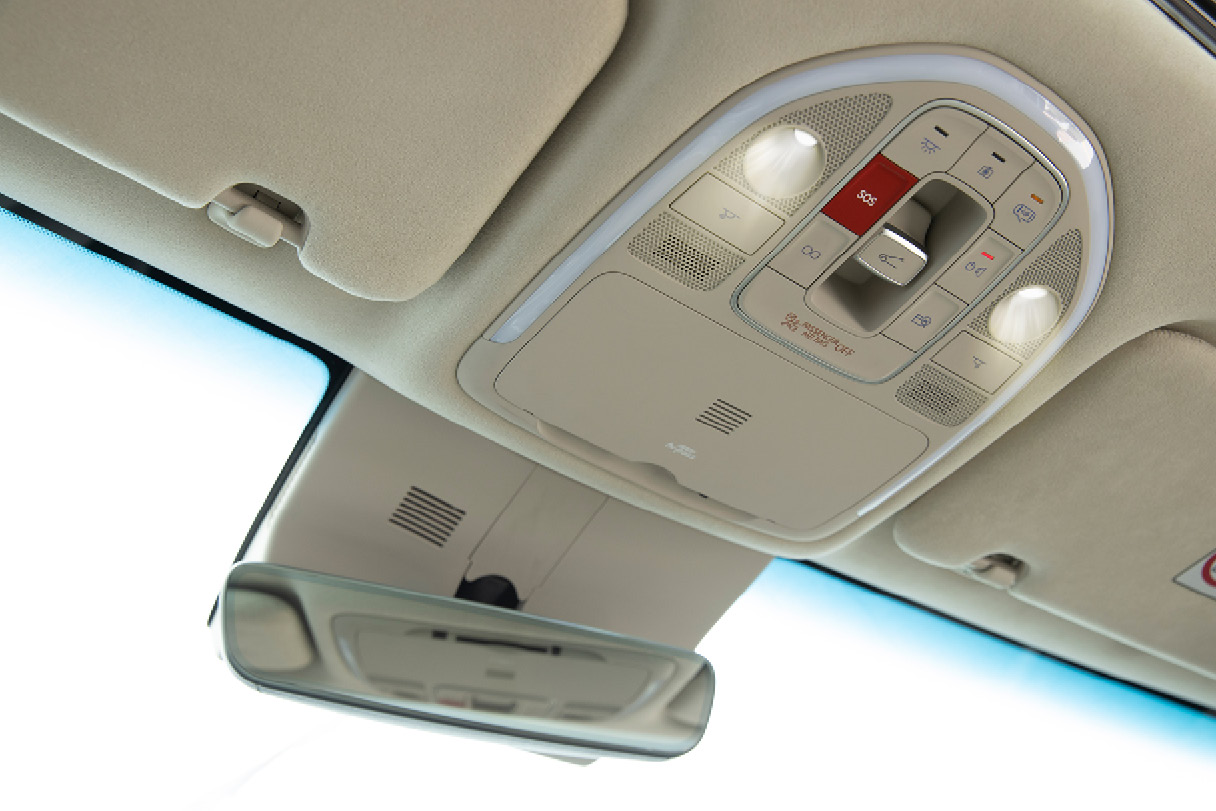
Vehicle interior lighting was once limited to illuminating specific areas. Today, however, it has become a pivotal element in transforming interior ambiance and conveying driving information through light. Hyundai Mobis has elevated this concept by redefining the purpose of mobility interior lighting. Their Human-Centric Lighting Technology optimally adjusts colors, brightness, and patterns to suit various scenarios, creating a more interactive experience for users.
Lighting helps activate and stabilize bodily rhythms. Hyundai Mobis has integrated academic findings into its Human-Centric Lighting Technology, which indicate that lower color temperatures promote a sense of tranquility, while higher color temperatures foster liveliness and energy.
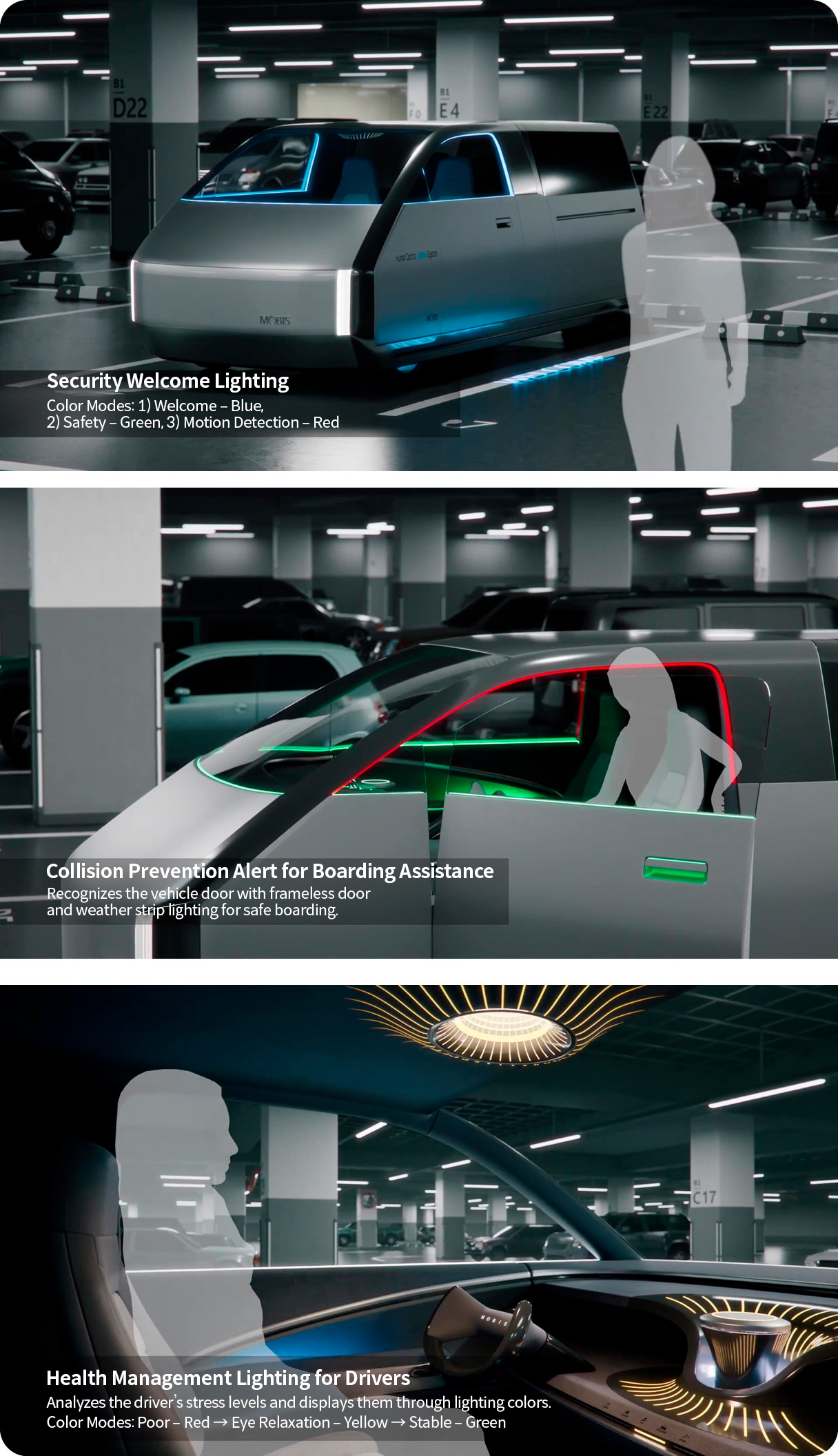
Human-Centric Lighting Technology offers 32 distinct lighting patterns designed to enhance user satisfaction at every stage of vehicle use—boarding, relaxing, and exiting. These features include health management functions to reduce stress and motion sickness, adaptive responses to external environments, disembarkation safety measures, and ultraviolet (UVC) sterilization. For instance, when a driver approaches a vehicle equipped with this technology, security welcome lighting is activated. Upon opening the door, boarding collision prevention a-lert lighting illuminates areas around the handle and door weather strip, ensuring a safe entry.
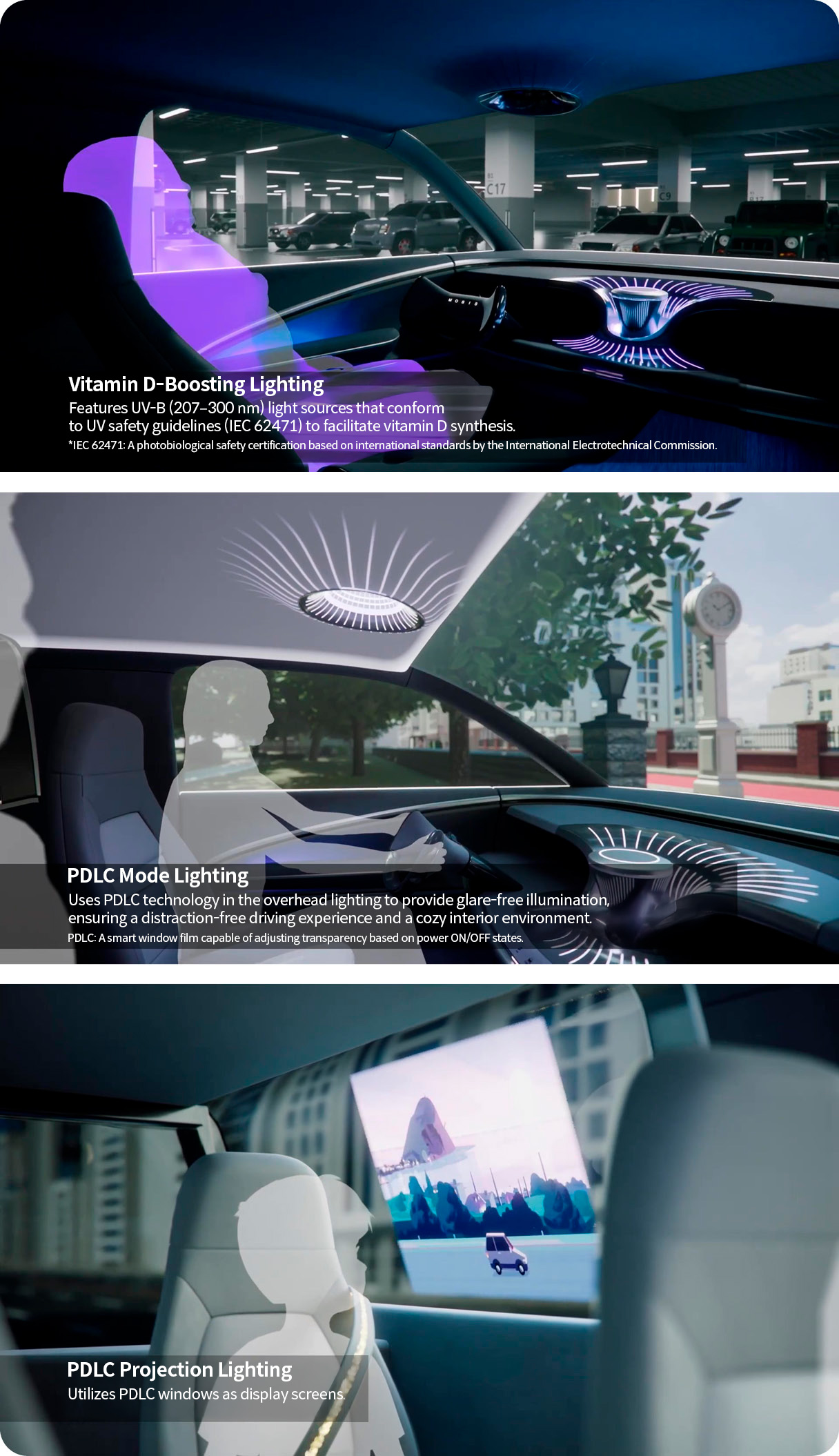
When the driver enters the vehicle, the Health Management Lighting for Drivers activates, analyzing the driver’s stress level and displaying it through colors. Red indicates high stress, yellow suggests the need for eye rest, and green represents a state of calm. The driver’s pulse, measured by a connected smartwatch, is also shown, with the lighting brightness adjusted to encourage steady breathing. As the driver begins driving, the lighting brightness is automatically adjusted. The PDLC (Polymer Dispersed Liquid Crystal) smart window film integrated into the overhead lighting adjusts its transparency with power, ensuring optimal brightness that does not interfere with driving. When applied to windows, this technology can also function as a display.
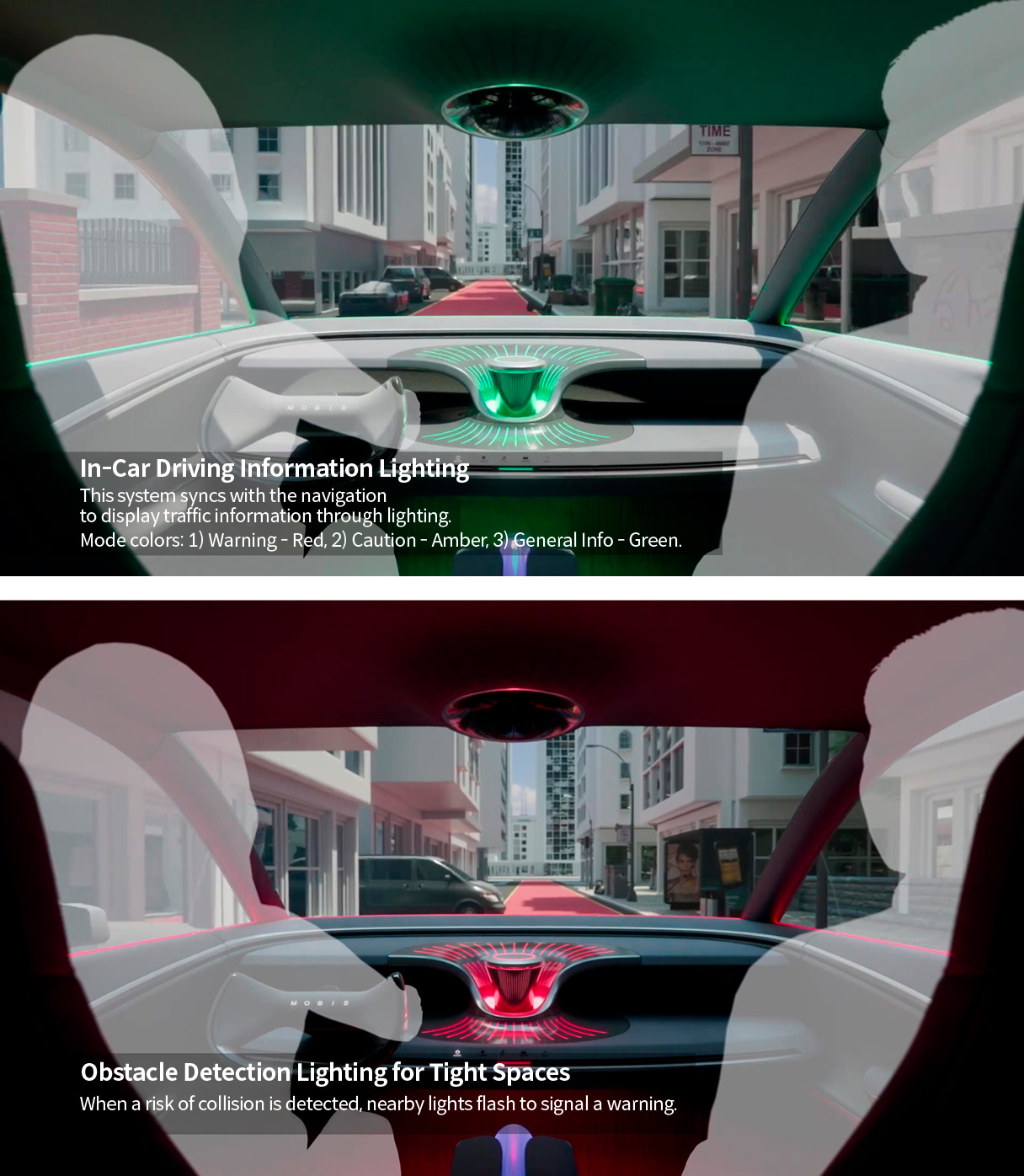
The In-Car Driving Information Lighting integrates with the navigation system, visualizing traffic information through lighting. Red, amber, and green indicate hazard, caution, and general guidance, respectively. The Obstacle Detection Lighting for Tight Spaces flashes lights near areas where collision risks are detected, a-lerting the driver. Additionally, the Motion Sickness Reduction Lighting adjusts its patterns to help passengers perceive speed, reducing motion sickness.
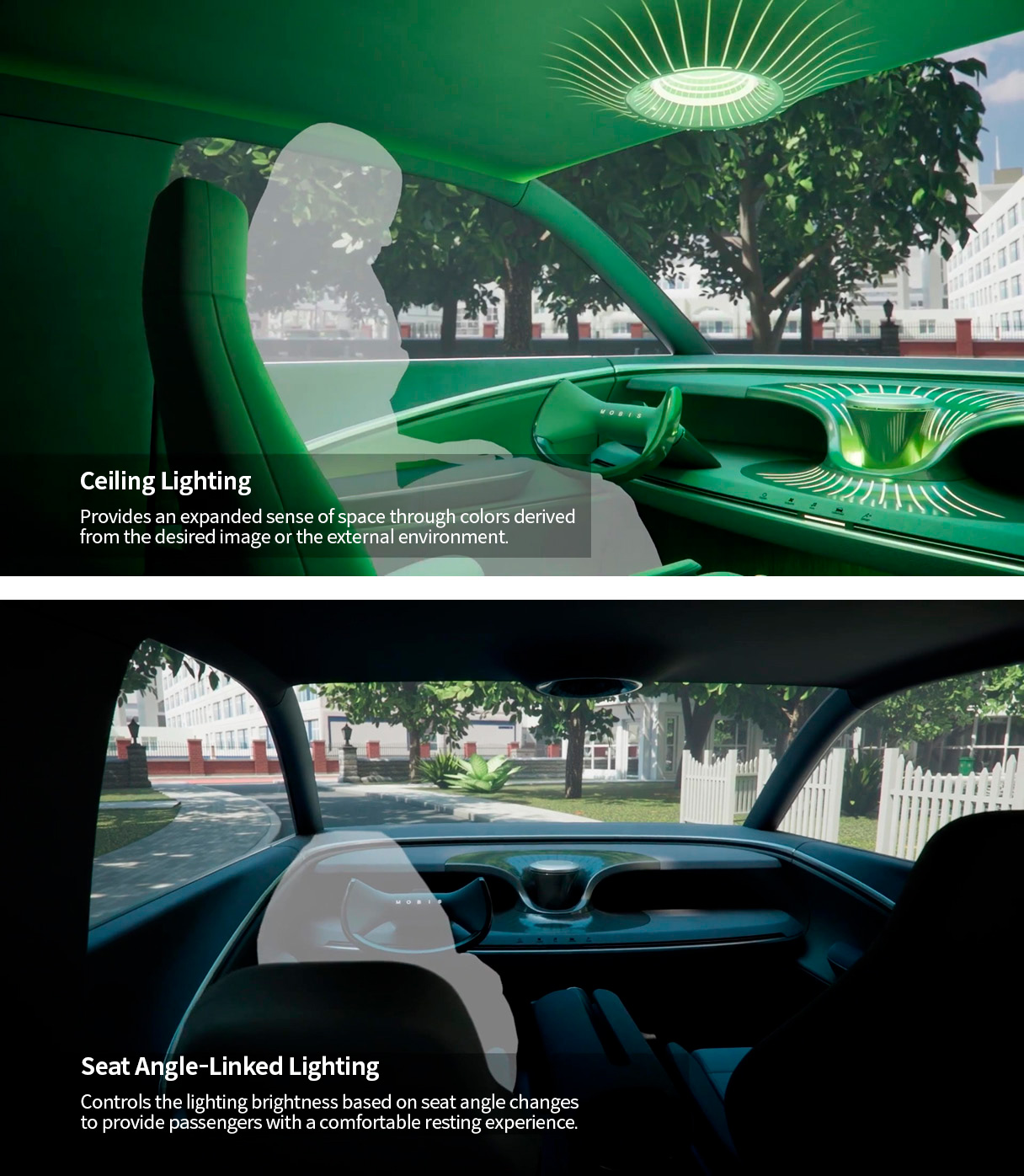
Even when parked and at rest, the Human-Centric Lighting Technology performs various functions. The Ceiling Lighting projects colors inspired by the desired image or external environment, expanding the sense of space within the vehicle. Additionally, the Seat Angle-Linked Lighting adjusts brightness to create a comfortable, relaxing atmosphere for passengers.
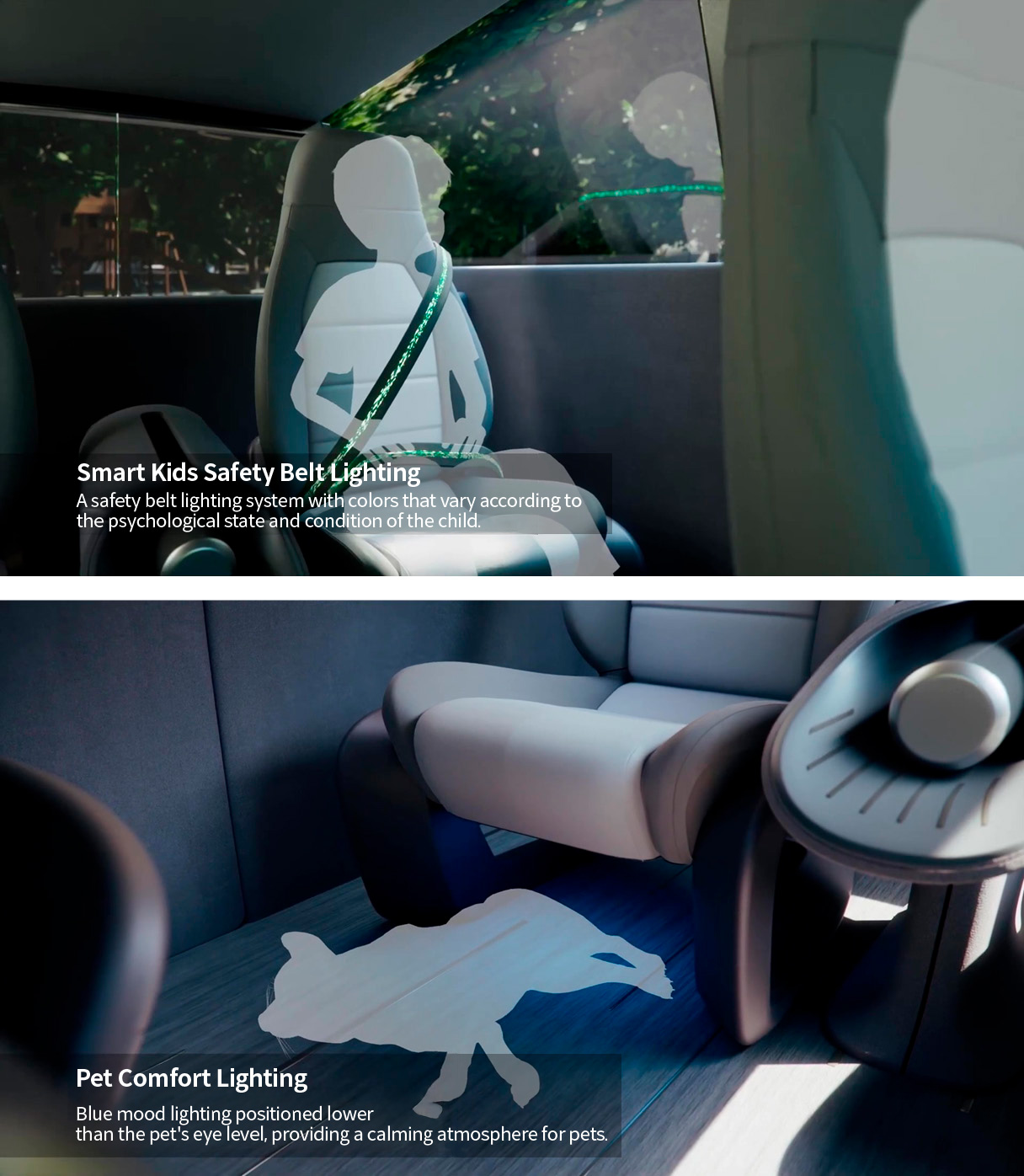
The lighting system is designed with the condition of every passenger in mind. Notable features include the Smart Kids Safety Belt Lighting, which changes color based on the child’s psychological state and condition, the Pet Comfort Lighting, positioned lower than the pet's eye level to create a calming atmosphere, and the Vitamin D-Boosting Lighting, which aids in vitamin D synthesis using UV-B (207–300 nm) light sources that comply with UV safety guidelines (IEC 62471).
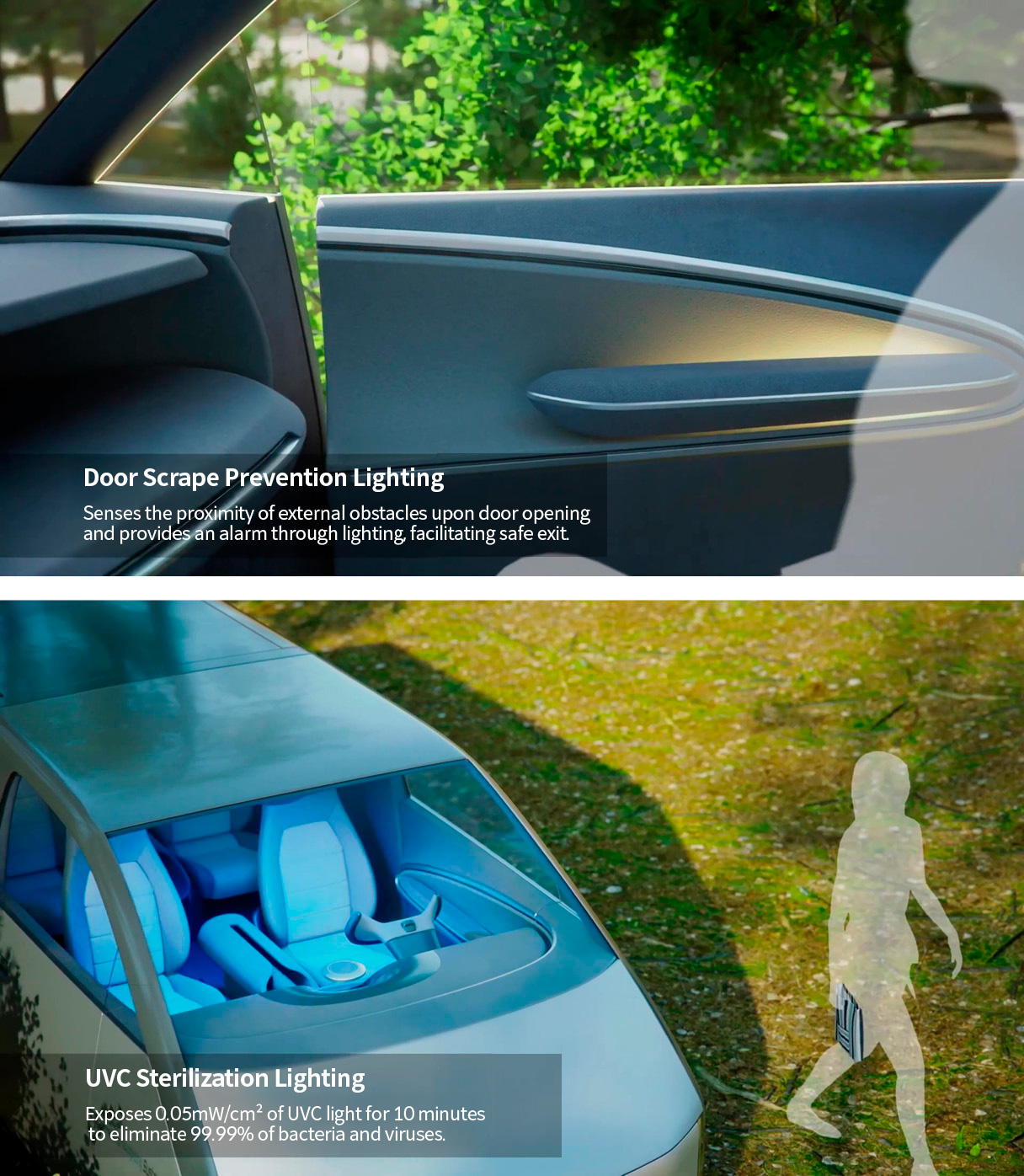
The lighting continues to serve its purpose even after the driver exits the vehicle. The Door Scrape Prevention Lighting detects the proximity of external obstacles when the door is opened and provides a color-coded warning. The Exit Inspection Assistance Lighting senses the seat weight and identifies any items left inside the cabin, offering a visual a-lert. Finally, the UVC Sterilization Lighting activates for 10 minutes to eliminate 99.99% of bacteria and viruses.
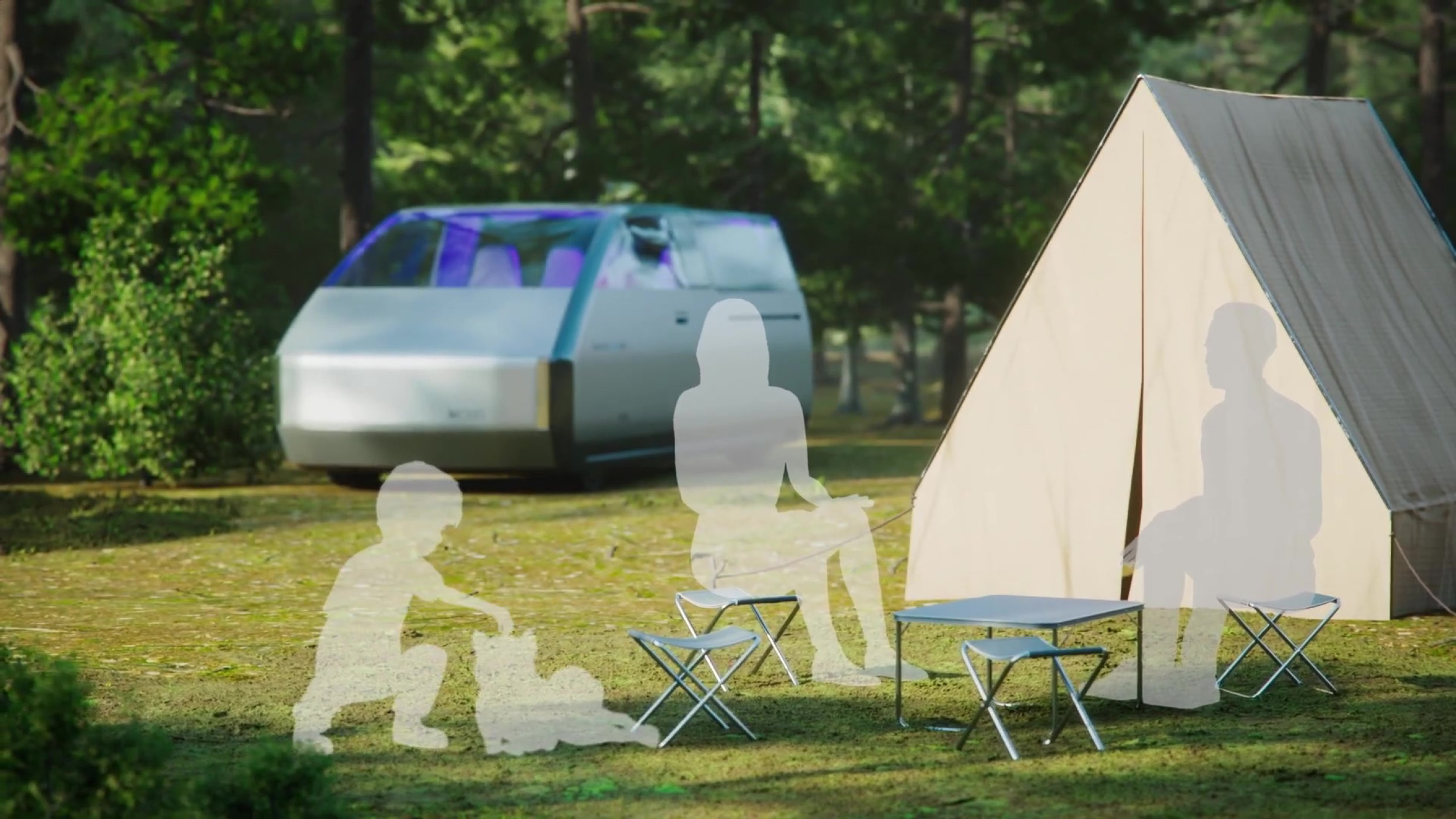
The Human-Centric Lighting Technology is a clear testament to the thoughtful consideration of user needs. It results from the integration of Hyundai Mobis' technologies, including biosignal control, eye tracking, and camera sensors, with software-driven innovations. Throughout the development process, Hyundai Mobis has enhanced its capabilities in both hardware and software, alongside its expertise in automotive system control technology.
What is the background behind Hyundai Mobis' development of such advanced lighting technology? In response, Lee Hyun-woo, SENIOR VICE PRESIDENT and Head of the Module Business Unit at Hyundai Mobis, explained, “The purpose and function of vehicle interior lighting are advancing to actively support the health, safety, and convenience of passengers.” He further stated, “We will continue to secure solutions tailored to future mobility with a customer-centric approach,” underscoring Hyundai Mobis' philosophy of dynamically responding to the rapidly changing mobility landscape.
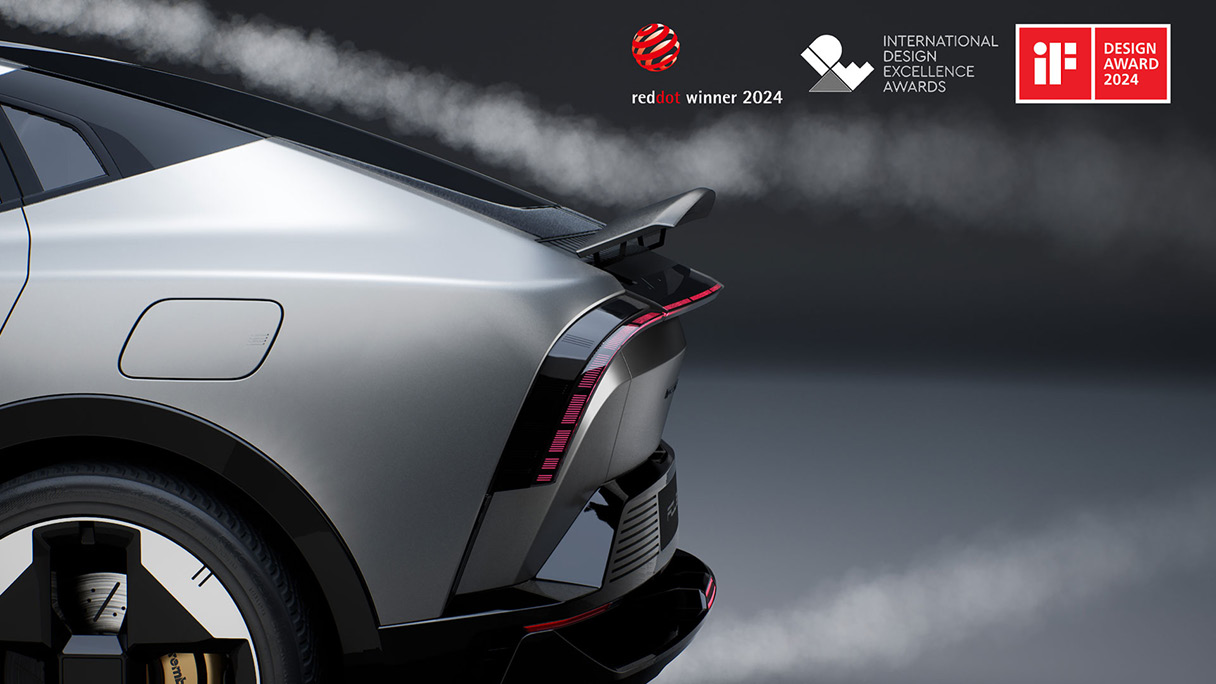
Hyundai Mobis is transitioning into a 'Mobility Solutions Provider' by leveraging its core technological expertise accumulated over years in traditional automotive engineering, alongside software-driven innovations. The company is placing strong emphasis on technologies focused on electric vehicles, autonomous driving, and emotional technologies to enhance mobility convenience. A prime example of this is Hyundai Mobis’ achievement of 2024 in winning top honors at the three major global design awards—the iF Design Award, Red Dot Design Award, and the U.S. IDEA Award—with its AALS (Active Aero Lighting System) technology, which combines aerodynamic enhancement with a dynamic moving lamp system.
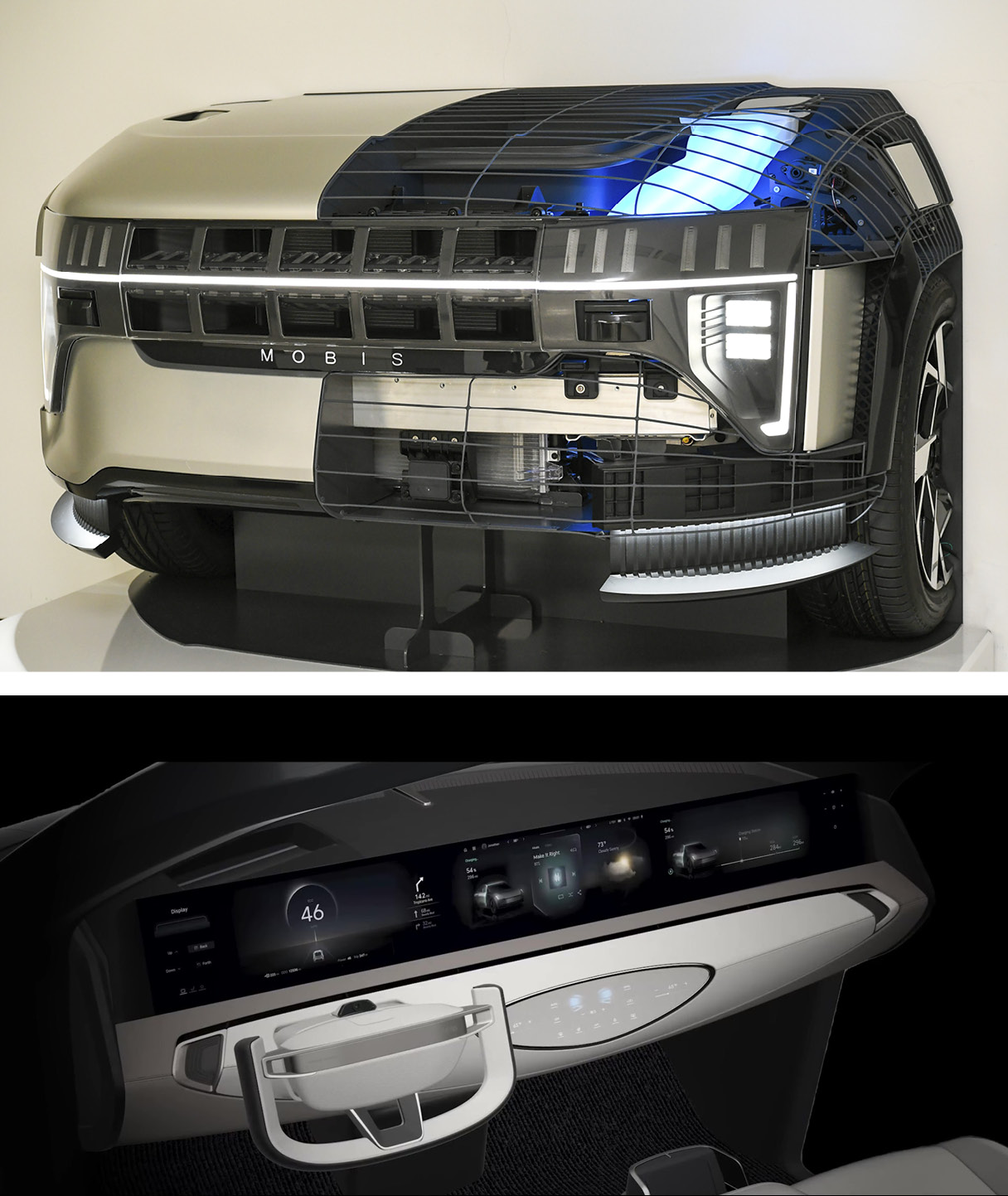
The AALS technology effectively manages airflow through an active air curtain at the front and a rear spoiler. When the spoiler extends, the previously hidden rear lamp smoothly emerges, enhancing both vehicle performance and design innovation. Hyundai Mobis has also introduced the Integrated Front Face Module, which minimizes air resistance while enhancing design diversity, as well as the M.VICS 5.0, a groundbreaking solution for future digital cockpits.
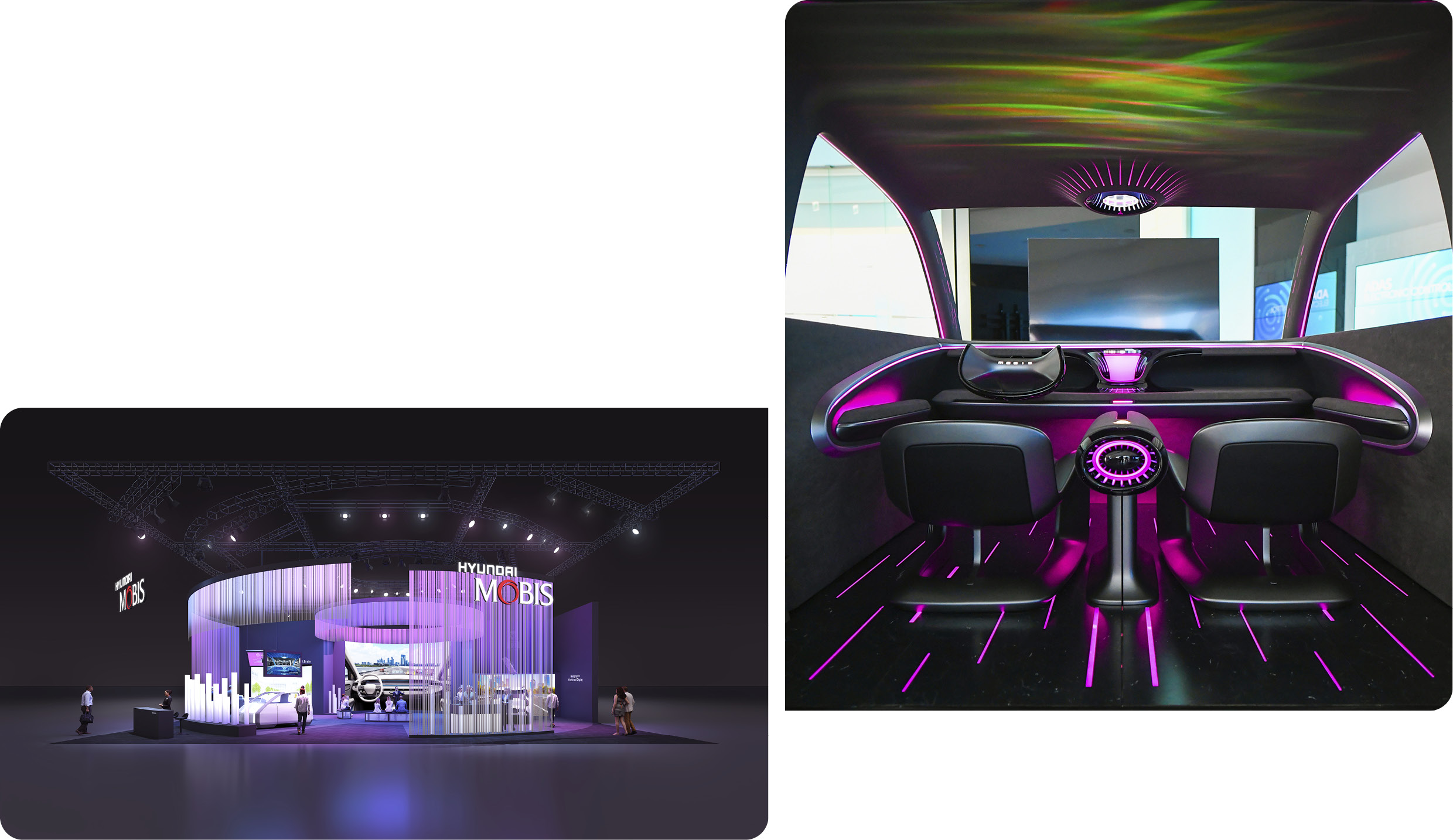
Meanwhile, Hyundai Mobis participated in CES 2025 at the Las Vegas Convention Center (LVCC), showcasing its technological expertise. Recognized as the world’s largest tech exhibition and a hub for future innovations, CES 2025 was held from Jan. 7 to 10, 2025 (local time). Under the theme “Beyond and More,” Hyundai Mobis introduced its “Human Tech” innovations, focused on enhancing interaction and communication with people. The company showcased three key technologies: the previously mentioned Human-Centric Lighting, the Holographic Windshield Display, and the Brainwave-Based Driver Distraction Care System (M.BRAIN).
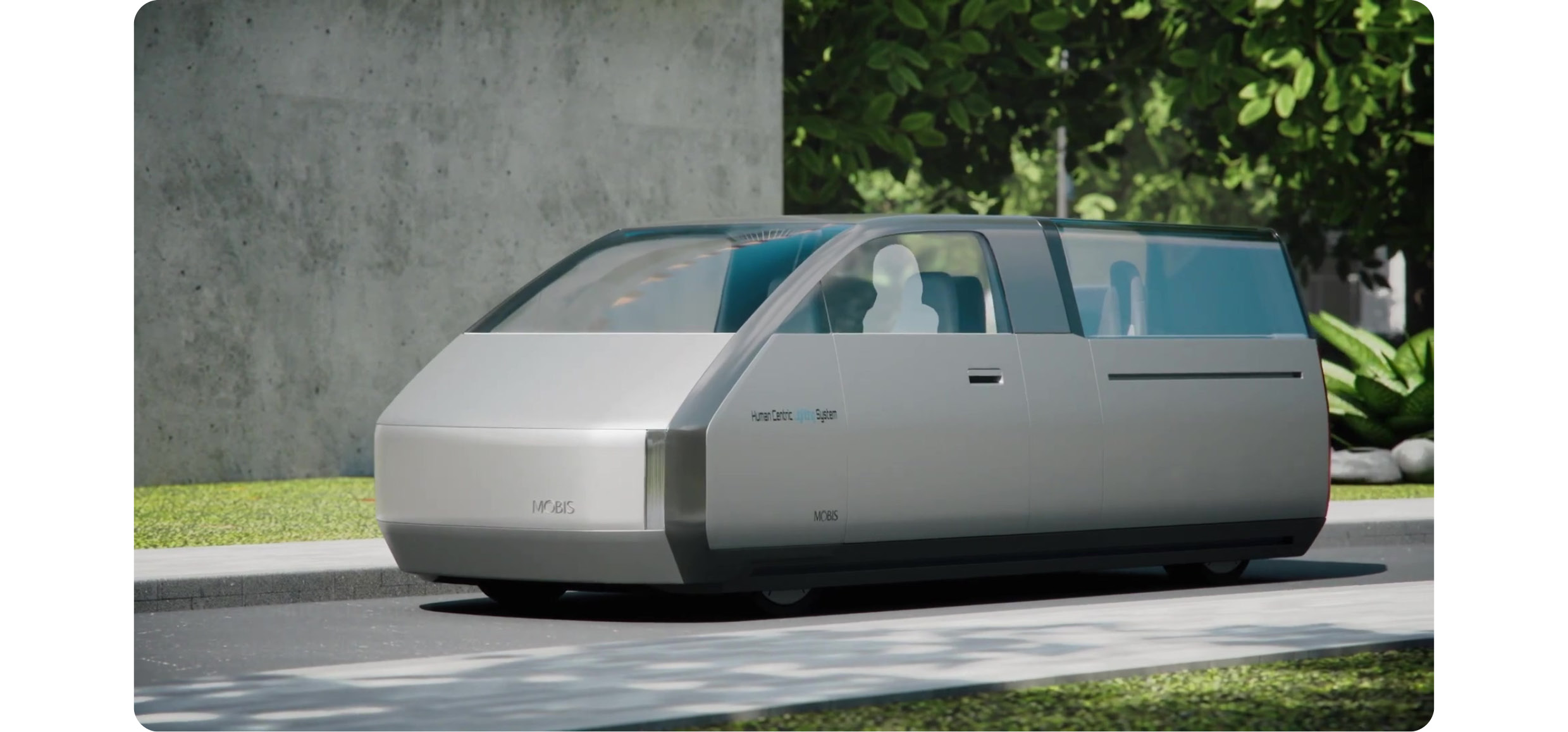
What will future mobility look like? One thing is clear: technology is advancing to actively support human health, safety, and convenience, much like the warm, thoughtful approach conveyed by Hyundai Mobis' Human-Centric Lighting. Hyundai Mobis is proactively securing the technologies that will shape the future of mobility, continuously strengthening its competitive edge, with the goal of becoming one of the top three global parts suppliers by 2033. Ultimately, Hyundai Mobis aims to create a more convenient, 'human-centered' mobility experience.